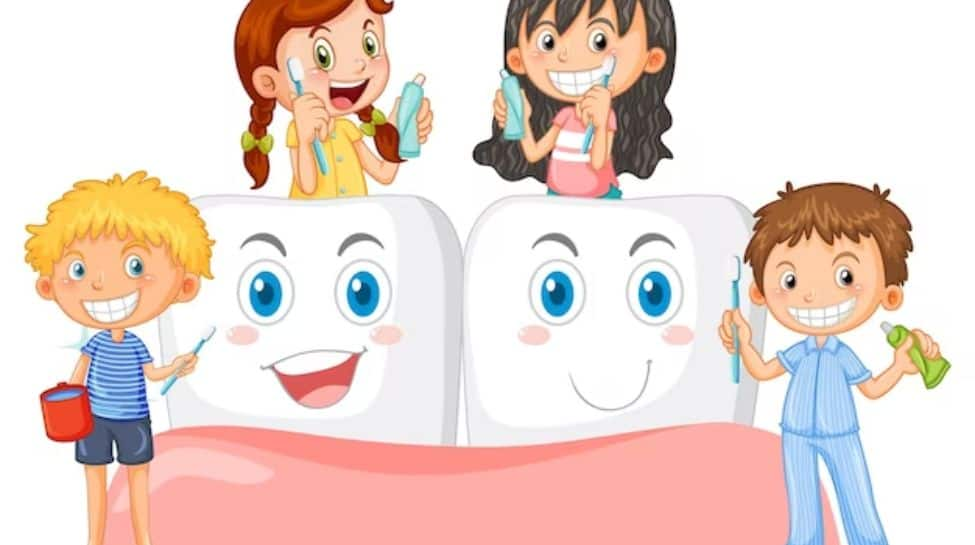Are you concerned about your child’s oral health? You’re not alone. Many parents wonder when to start brushing, whether they should use toothpaste, and how to maintain optimal oral hygiene for their little ones.
Here are some tips from Dr. Chaitali Doshi, BDS, PGCE (Endodontic Specialist), Founder and Partner of Beaming Smiles Dental Clinic to keep those little smiles healthy and bright.
When to start brushing your teeth?
Did you know that the road to a healthy smile starts much earlier than most parents think? Many believe that oral hygiene isn’t necessary until teeth appear, but it’s actually important to start even before the first tooth appears.
Cleaning those little gums
Around six months, when your baby starts eating solid foods, it’s time to start cleaning his gums. Even without teeth, food particles can get trapped in the gums, creating a haven for bacteria. At this stage, you don’t need a regular toothbrush. A silicone finger brush with soft, flexible bristles is perfect for gently massaging and cleaning gums.
If a finger brush is not comfortable, try using a muslin or mulmul cloth. Wet your finger with clean water, wrap it in the cloth and gently wipe your baby’s gums after each meal. This routine is ideal until your child has three or four teeth.
Introducing the toothpaste
Once teeth start coming in, it’s time to introduce a toothbrush and toothpaste. Use the smallest toothbrush designed for children. For babies under two years old, choose a toothpaste with 0 ppm fluoride.
Between the ages of two and six, switch to a children’s toothpaste with 500 ppm fluoride. This level of fluoride protects little ones’ teeth from cavities and is safe for them.
The mixed dentition phase
Around age six, your child’s baby teeth will start to fall out and permanent teeth will start to grow in. This mixed dentition phase is crucial to protect the new permanent teeth from decay. A toothpaste specially formulated for this stage with 1000 ppm fluoride will help keep the new teeth healthy.
Towards adolescence and beyond
Once your child turns 12, they can move on to regular adult toothpaste, which typically contains around 1,000 ppm of fluoride. Encourage your child to brush twice a day for at least two minutes. Making oral care fun can make a big difference. Use songs, timers, or reward charts to turn brushing into a fun activity rather than a chore.
Regular dental visits
Regular dental checkups are essential for your child’s oral health. Dentists offer professional cleanings, fluoride treatments, and valuable advice tailored to your child’s needs. Early dental visits also help your child feel comfortable with the dentist, which reduces anxiety in the long run.
Starting oral hygiene early and incorporating it into your child’s daily routine lays the foundation for a lifetime of healthy smiles. With the right tools and techniques and a little creativity, you can make oral care an enjoyable and effective habit for your little ones. Remember that a healthy smile starts with good habits acquired from an early age.
Disclaimer:
The information contained in this post is for general information purposes only. We make no representations or warranties of any kind, express or implied, about the completeness, accuracy, reliability, suitability or availability with respect to the website or the information, products, services, or related graphics contained on the post for any purpose.
We respect the intellectual property rights of content creators. If you are the owner of any material featured on our website and have concerns about its use, please contact us. We are committed to addressing any copyright issues promptly and will remove any material within 2 days of receiving a request from the rightful owner.

